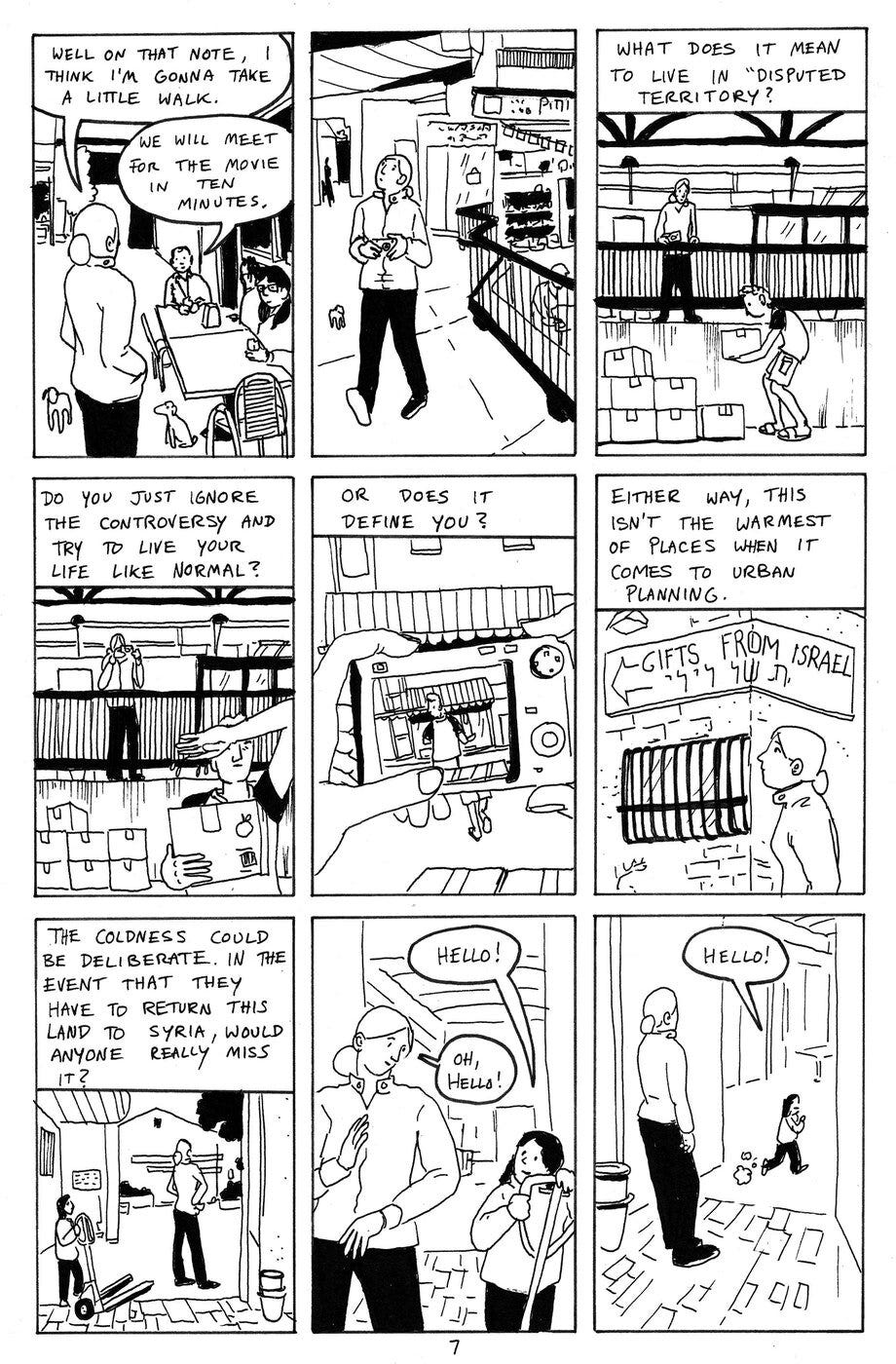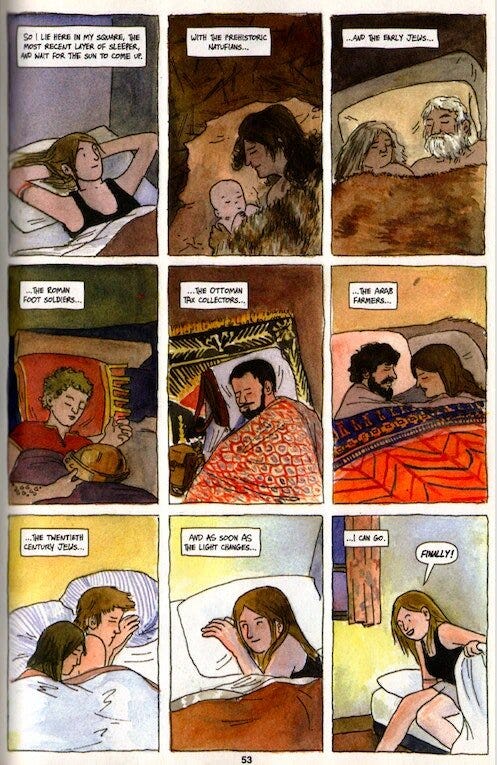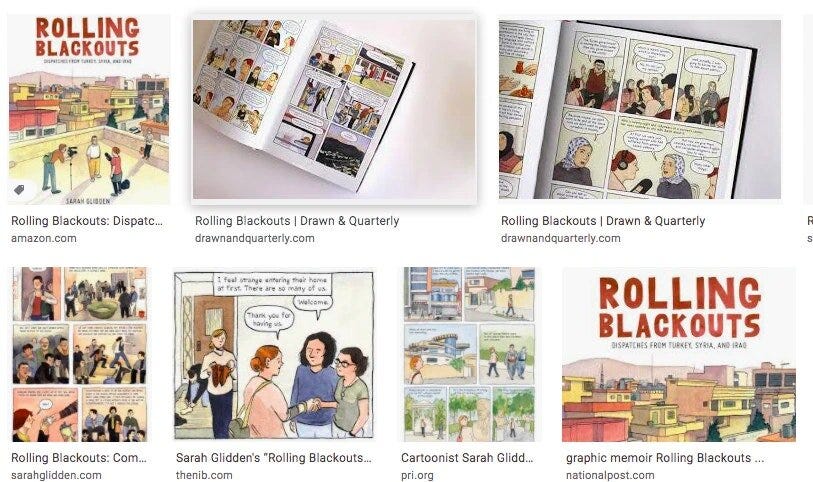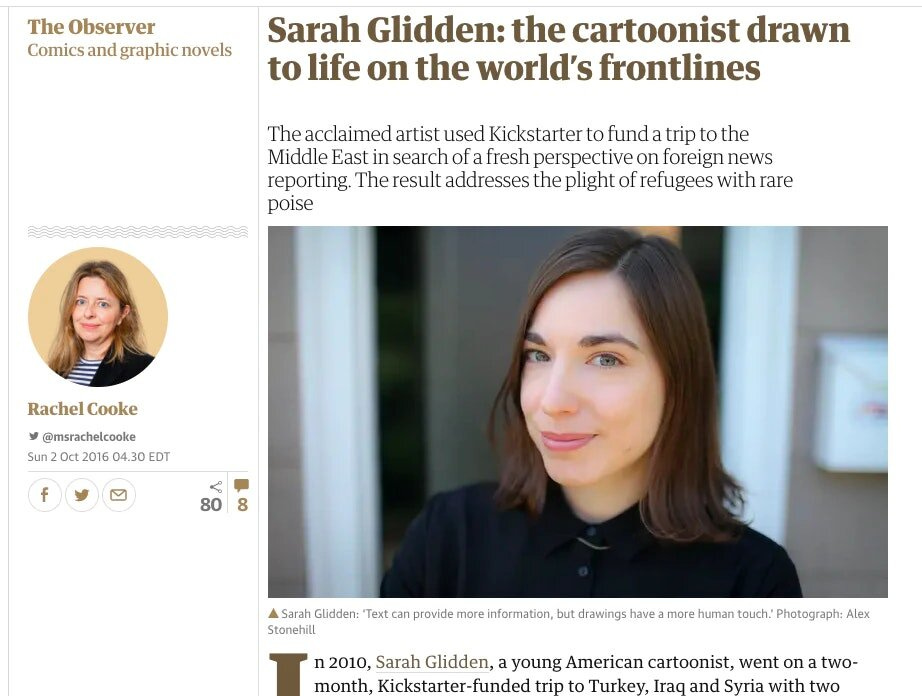Part 2: How to go from 2 panels to 4 to the New York Times
From 2 panels to 4 panels to 13 pages to 60 pages to 200 pages to 300 pages - Sarah Glidden's story
Part 2 of the story of Sarah Glidden, a good friend and great cartoonist. In Part 1, we saw her early first ever panels, diary comics and mini-comics.
So after that she decided she wanted to try something larger. She was used to herself as a main character, so she crafted this narrative called "The Reader", where placed herself inside a novel she had enjoyed.
I think the total count was 12 or 13 pages, her longest complete narrative.
The main takeaway here is that she now that confidence (and skills, but mostly confidence) to handle a longer narrative. She gave herself a new challenge, and met it.
After that, what to do? She made a good comic, and she knew she loved the medium and wanted to make more. She was comfortable with herself as a main character, but she was also interested in current events, cultural history and journalism.
She took a trip to Israel, took copious notes and came back to tell the story of that trip. It became a series of 3 24-page mini-comics, called How to Understand Israel in 60 Days or Less. Here's a sketch from her travels, then ca over and a page from the mini-comics.
I say it was three mini-comics, but by that time she was only 1/3 or so into the story.
She had been attending comic book conventions, especially MoCCA in NYC, and maybe a few others. And so with three of these in hand, she shared it at the convention, and found one young editor at DC/Vertigo who was compelled by it and took them home, and he soon wrote her and said Vertigo would be interested in publishing the book. But it would have to be color…
And so she said yes, and that meant she had to completely re-do 70 pages or so, and by that time, Sarah had confidence, skills and patience, and so she did it. Here is an example of an old and new page. You can see it's utterly redrawn, as well as painted.
This is a lovely sequence, generated by the confidence she developed in doing diary comics and mini-comics.
The whole 200-page book became this.
Bravo, Sarah!
And so, with that behind her, she had more confidence, but a little more cache, and so wrangled herself a little funding from a Kickstarter campaign and into an international trip with some journalists, to Iraq and Syria (in 2010, right before the collapse of Syria, if I remember correctly.)
She opted for the same type of storytelling. First person, watercolor, with herself as a main character, but here she tried to use comics to show the complexity of how journalists get their stories.
That was a many-year project and it became Rolling Blackouts. You can get a good sense of it from the image grabs below. It was 300 pages!
This book was extremely well-received, here's a web-review from 2016, ten years after her first diary comics.
So, this isn't meant to be a career trajectory as much as a craft trajectory. Sarah taught herself comics through diary strips, and then specific, self-motivated narratives. She wrote and drew and wrote and drew. She's really good now!
♡\( ̄▽ ̄)/♡
And she still occasionally makes mini-comics. I know she's got plans for another book but I'm not sure what they are now. I'm sure she's up to something.
But that's why we do diary comics, or silent comics, or practice this or that technique - to get good, like Sarah. To get confident, articulate and dexterous. And to know our creative selves.
So I hope that's why you're all here and hope this is inspiring.
Thanks Sarah for letting us share your story!
Cheers
Tom Hart at SAW

















I love this, thank you! And the idea behind The Reader is SO good!